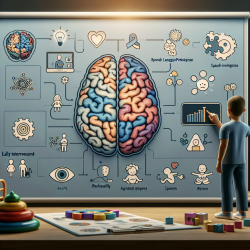Naturalistic Developmental Behavioral Interventions (NDBIs) represent a significant evolution in the treatment of Autism Spectrum Disorder (ASD). These interventions are rooted in the principles of both behavioral and developmental sciences and have been empirically validated as effective methods for improving outcomes in children with ASD. This blog aims to help practitioners enhance their skills by implementing the findings from the research article titled "Naturalistic Developmental Behavioral Interventions: Empirically Validated Treatments for Autism Spectrum Disorder."
NDBIs are characterized by their implementation in natural settings, shared control between the child and therapist, utilization of natural contingencies, and the use of a variety of behavioral strategies to teach developmentally appropriate skills. The empirical support for NDBIs is robust, making them a crucial tool for practitioners working with children with ASD.
Theoretical Foundations
The theoretical underpinnings of NDBIs draw from both behavioral psychology and developmental science. Behavioral principles such as operant conditioning are integrated with developmental concepts like joint attention and imitation. This dual approach allows for a more holistic treatment plan that addresses both the behavioral and developmental needs of the child.
Empirical Support
Research has consistently shown that NDBIs are effective in improving various developmental domains, including social, cognitive, and language skills. Studies have demonstrated that these interventions can be implemented with high fidelity in clinics, homes, and schools, resulting in consistent positive outcomes.
Key Features of NDBIs
- Three-Part Contingency: Antecedent-response-consequence framework helps the child understand when to respond and provides feedback.
- Manualized Practice: Clear procedures and intervention manuals ensure consistent treatment implementation.
- Fidelity of Implementation: Assessments to ensure treatment is implemented as intended, affecting child outcomes positively.
- Individualized Treatment Goals: Developmentally-based strategies guide goal development tailored to each child.
- Ongoing Measurement of Progress: Systematic data collection to track child progress and adapt interventions as needed.
- Child-Initiated Teaching Episodes: Following the child’s lead to increase motivation and participation.
- Environmental Arrangement: Setting up the environment to encourage child interaction and initiation.
- Natural Reinforcement: Reinforcement intrinsic to the child’s goal, enhancing motivation.
- Prompting and Prompt Fading: Systematic use of prompts to support new skills and their gradual fading.
Implementation Strategies
Practitioners can improve their skills by incorporating the following strategies into their practice:
- Use of Naturalistic Settings: Implement interventions in everyday environments to facilitate generalization of skills.
- Focus on Developmentally Appropriate Skills: Target skills that are just beyond the child’s current capabilities.
- Incorporate Play and Social Interactions: Use play and social routines to teach new skills.
- Engage Family Members: Train parents and caregivers to use NDBI strategies in daily routines.
Future Research Directions
While NDBIs have shown great promise, there is a need for further research to refine these interventions and understand their long-term effects. Future studies should focus on:
- Examining the active ingredients within NDBIs to determine which components are most effective.
- Conducting larger-scale randomized controlled trials to validate the efficacy of NDBIs across diverse populations.
- Developing methods to implement NDBIs in community settings, ensuring broader access to these effective interventions.
For practitioners interested in deepening their understanding of NDBIs and their application, I encourage you to read the original research paper: Naturalistic Developmental Behavioral Interventions: Empirically Validated Treatments for Autism Spectrum Disorder.










